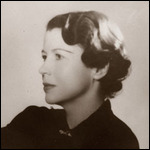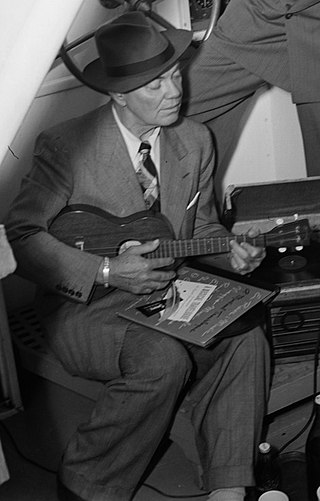Related Research Articles

Ferdinand Rudolph von Grofé, known as Ferde Grofé was an American composer, arranger, pianist, and instrumentalist. He is best known for his 1931 five-movement symphonic poem, Grand Canyon Suite, and for orchestrating George Gershwin's Rhapsody in Blue for its 1924 premiere.

Nathaniel Shilkret was an American musician, composer, conductor and musical director.

Katharine Faulkner "Kay" Swift was an American composer of popular and classical music, the first woman to score a hit musical completely. Written in 1930, the Broadway musical Fine and Dandy includes some of her best known songs; the song “Fine and Dandy” has become a jazz standard. "Can't We Be Friends?" (1929) was her biggest hit song.

Jessica Valentina Dragonette was a singer who became popular on American radio and was active in the World War II effort.

Walter Johannes Damrosch was a Kingdom of Prussia-born American conductor and composer. He was the director of the New York Symphony Orchestra and conducted the world premiere performances of various works, including Aaron Copland's Symphony for Organ and Orchestra, George Gershwin's Piano Concerto in F and An American in Paris, and Jean Sibelius' Tapiola. Damrosch was also instrumental in the founding of Carnegie Hall. He also conducted the first performance of Rachmaninoff's Piano Concerto No. 3 with the composer himself as soloist.

Camel Caravan was a musical variety radio program, sponsored by Camel cigarettes, that aired on NBC Radio and CBS Radio from 1933 to 1954. Various vocalists, musicians and comedy acts were heard during the 21 years this show was on the air, including such talents as Benny Goodman, Georgia Gibbs, Anita O'Day and Vaughn Monroe.

Benjamin Anzelevitz, known professionally as Ben Bernie, was an American jazz violinist, bandleader, and radio personality, often introduced as "The Old Maestro". He was noted for his showmanship and memorable bits of snappy dialogue, being part of the first generation of "stars" of American popular music, alongside other artists such as Paul Whiteman, Ted Lewis and Al Jolson.

Alfred Goodman was a conductor, songwriter, stage composer, musical director, arranger, and pianist.

Werner Janssen was an American composer and conductor of classical music and film scores. He was the first New York-born conductor to lead the New York Philharmonic. For his film work he was nominated for six Academy Awards.
The American Album of Familiar Music is a radio program of popular music broadcast from October 11, 1931, to June 20, 1954, first on NBC, then on ABC and finally on local stations. Directed by James Haupt, the show was produced by Frank and Anne Hummert, better remembered today for creating Ma Perkins and numerous other soap operas.

The Palmolive Hour was an American radio concert-variety program, sponsored by Palmolive Soap and broadcast on NBC from December 1927, to July 29, 1931. The Palmolive Musical Stock Company offered a mix of jazz, show tunes and opera selections.

The Waldorf-Astoria Orchestra was an orchestra that played primarily at the Waldorf Astoria Hotel, both the old and new locations. In addition to providing dinner music at the famous hotel, the orchestra made over 300 recordings and many radio broadcasts. It was established in the 1890s, and was directed by Carlo Curti in early 1900s, Joseph Knecht at least from 1908 to 1925, later by Jack Denny and others, and then Xavier Cugat from approximately 1933 to 1949.
"The Lonesome Road" is a 1927 song with music by Nathaniel Shilkret and lyrics by Gene Austin, alternately titled "Lonesome Road", "Look Down that Lonesome Road" and "Lonesome Road Blues." It was written in the style of an African American folk song.
Genesis Suite is a 1945 work for narrator, chorus and orchestra. A musical interpretation of the first eleven chapters of the Book of Genesis, the suite was a collaborative work by seven composers, some of whom wrote film music in Hollywood. The project was conceived by Nathaniel Shilkret, a noted conductor and composer of music for recording, radio and film. Shilkret wrote one of the seven pieces and invited the remaining composers to submit contributions as work-for-hire. Arnold Schoenberg and Igor Stravinsky wrote, respectively, the first and last parts. The Biblical text used in the spoken word narrative is the American King James Version. It was intended to be a crossover from art music to popular music.
Concerto for Trombone is a 1942 instrumental crossover work in three movements, which trombonist Tommy Dorsey, one of the best known musical entertainment stars of his time, commissioned from Nathaniel Shilkret, a noted conductor and composer of music for recording, radio and film.
The Magic Key of RCA was an American variety radio show that featured an unusually large and broad range of entertainment stars and other noted personalities. It was on the NBC Blue Network from September 29, 1935, until September 18, 1939.
Edward T. "Eddie" King was an early twentieth century percussionist, conductor, Artist and Repertoire (A&R) man, and manager for Zon-o-phone, the Victor Talking Machine Company, and Columbia Records.

The March of Time is an American radio news documentary and dramatization series sponsored by Time Inc. and broadcast from 1931 to 1945. Created by broadcasting pioneer Fred Smith and Time magazine executive Roy E. Larsen, the program combined actual news events with reenactments. The "voice" of The March of Time was Westbrook Van Voorhis. The radio series was the basis of the famed March of Time newsreel series shown in movie theaters from 1935 to 1951.

Blackstone Plantation is an old-time radio musical variety program in the United States. It was broadcast on CBS (1929–1930) and on NBC (1930–1934). The program was one of NBC's top-rated programs in 1932.

Margherita Maria Francesca LaCentra was an American contralto singer, best known for her work on old-time radio and her singing with Artie Shaw's orchestra. She also performed as Barbara Fulton.
References
- 1 2 3 Dunning, John, On the Air: The Encyclopedia of Old-Time Radio, Oxford University Press, New York, 1998, p. 532. ISBN 0-19-507678-8
- 1 2 Hickerson, Jay, The New, Revised Ultimate History of Network Radio Programming and Guide to All Circulating Shows, Third Edition, Jay Hickerson, 1996.
- ↑ Shilkret, Nathaniel, ed. Shell, Niel and Barbara Shilkret, Nathaniel Shilkret: Sixty Years in the Music Business, Scarecrow Press, Lanham, Maryland, 2005. ISBN 0-8108-5128-8
- 1 2 Shilkret, Nathaniel, Barbara Shilkret, and Niel Shell, Feast or Famine: Sixty Years in the Music Business, archival edition of Shilkret autobiography, 2001 (copies deposited in the New York Public Library for the Performing Arts, The City College of New York Archival Library, The New York Philharmonic Archives, The Victor Archives (SONY)).
- ↑ Cox, Jim, Music Radio: The Great Performers and Programs of the 1920s through Early 1960s, McFarland, 2005, pp. 99--101. ISBN 0-7864-2047-2
- ↑ DeLong, Thomas A., The Mighty Music Box, Hastings House, 1980, pp. (198--202 and) 202-206. ISBN 0-86533-000-X
- ↑ DeLong, Thomas A. Radio Stars: An Illustrated Biographical Dictionary of 953 Performers, 1920 through 1960, McFarland, 1996, p. 82. ISBN 0-7864-0149-4
- ↑ Dunning, John, Tune in Yesterday: The Ultimate Encyclopedia of Old-Time Radio 1925--1976, Prentice-Hall, 1976, p. 467. ISBN 0-13-932616-2